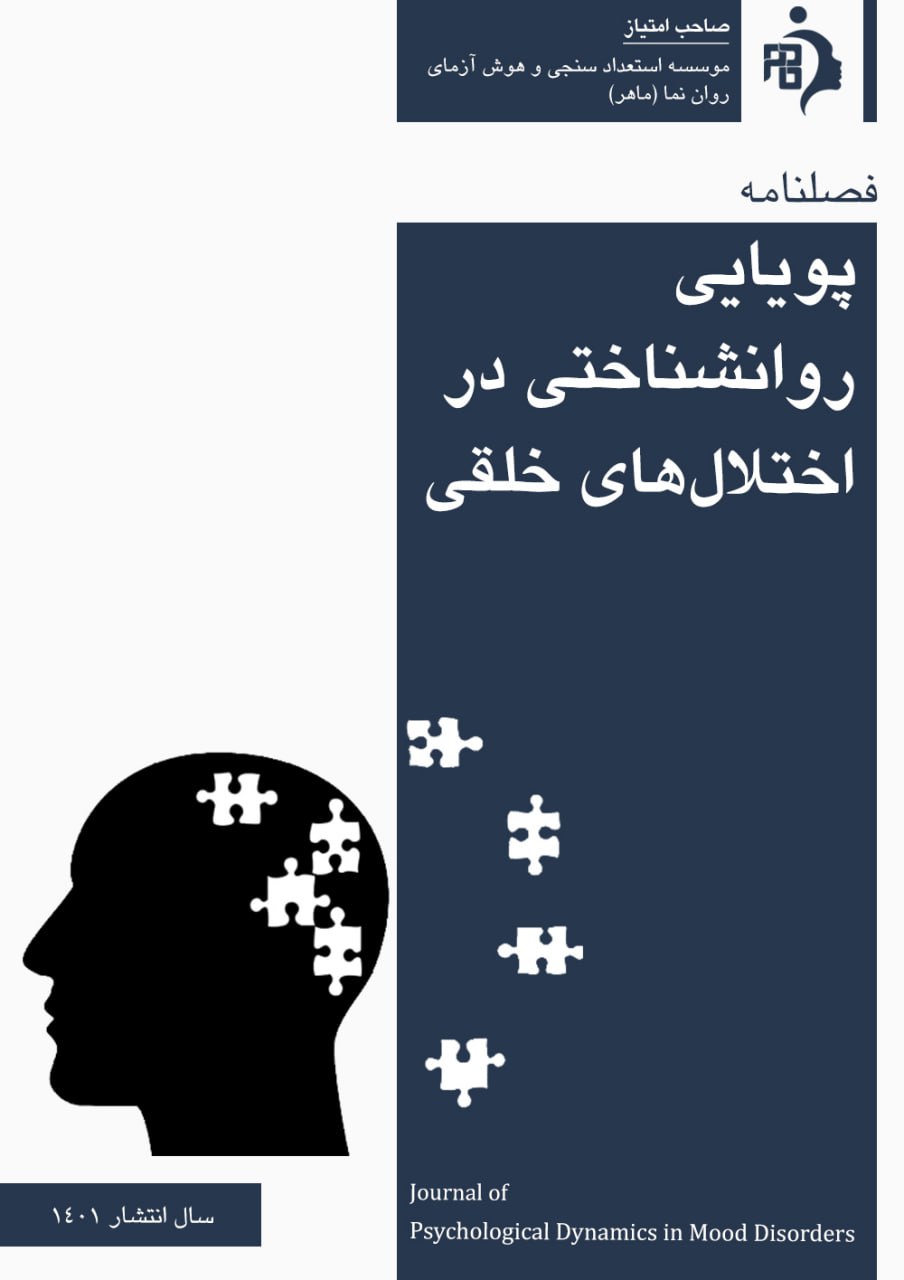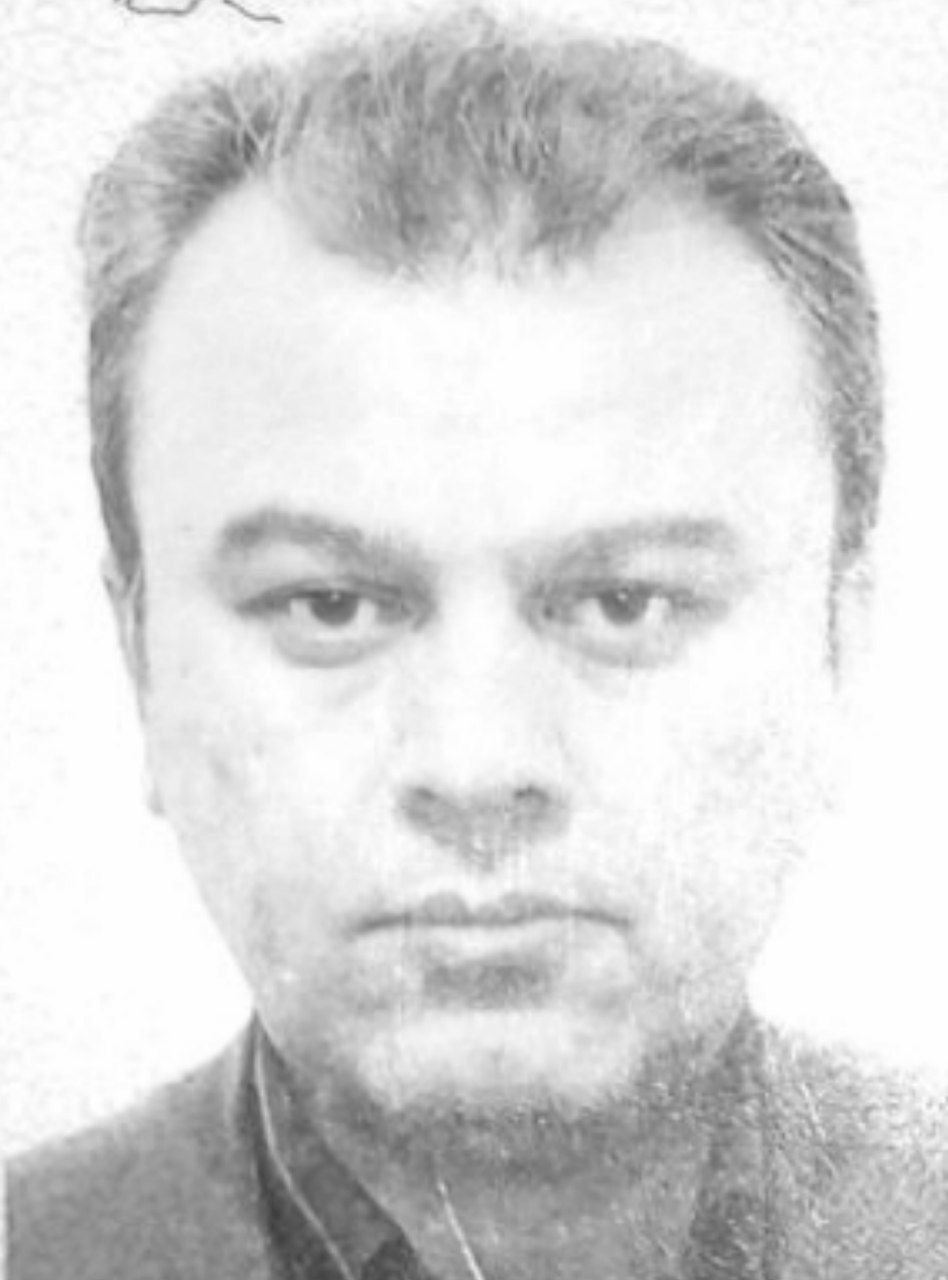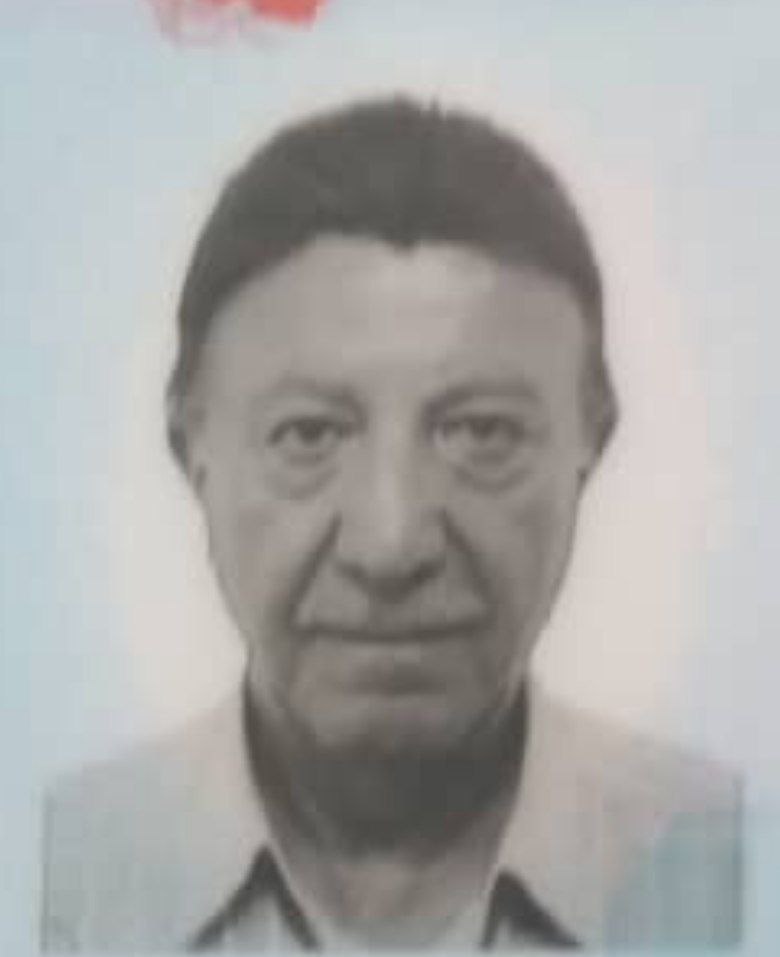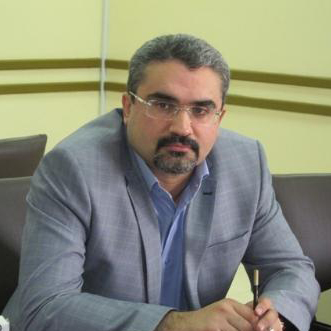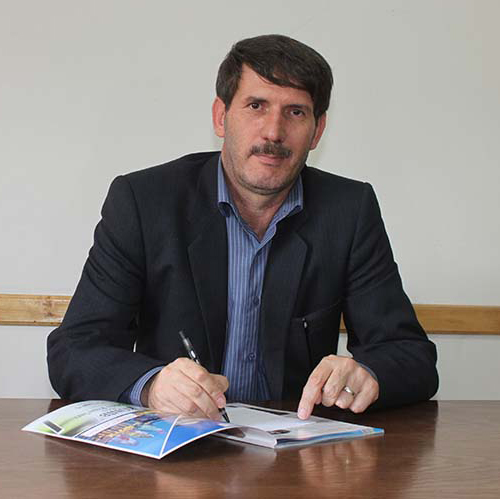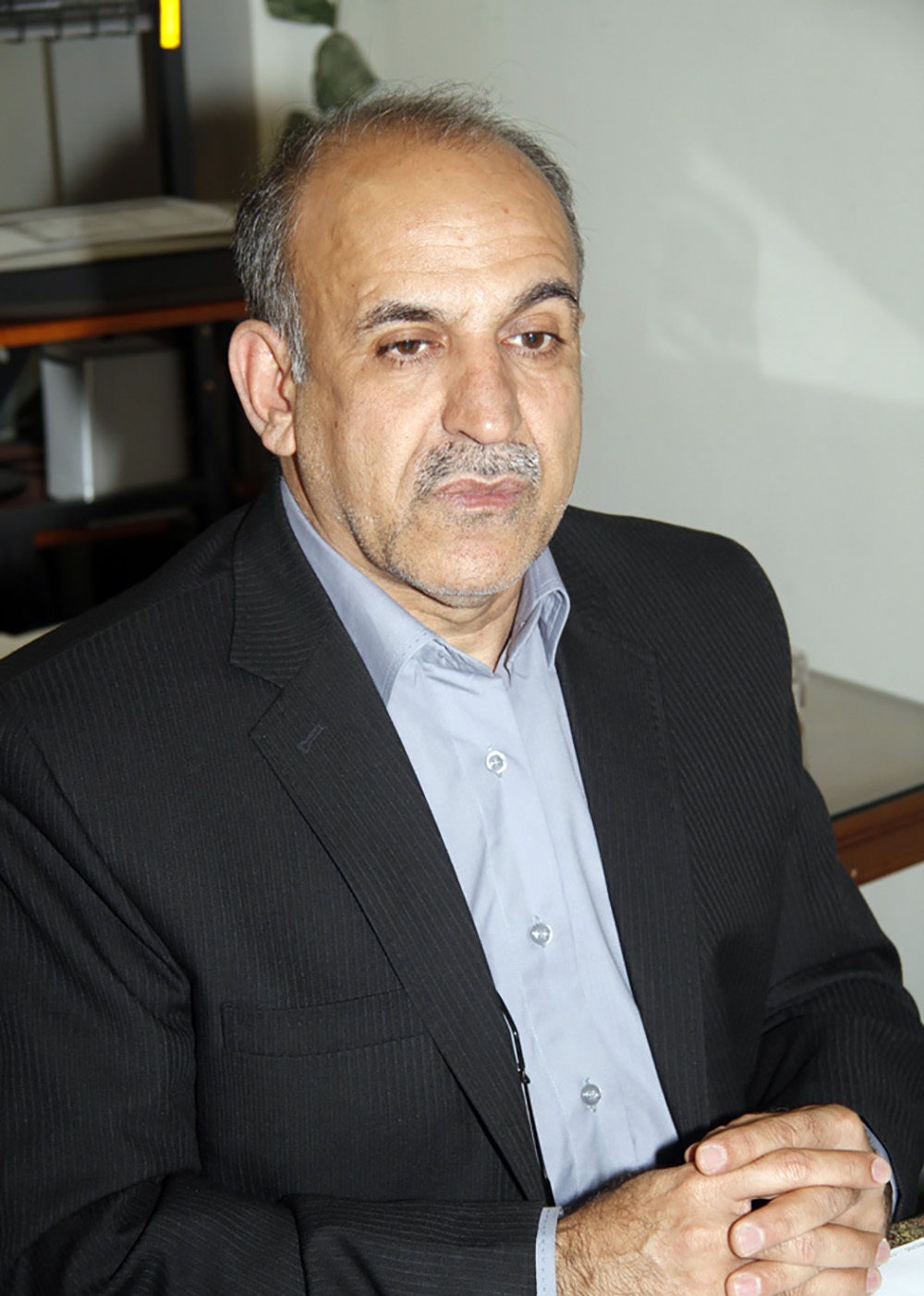اثربخشی گروه درمانی شناختی رفتاری هیجانمدار بر خودتنظیمی، سرمایههای روانشناختی و تحول مثبت در نوجوانان مضطرب
کلمات کلیدی:
گروه درمانی شناختی رفتاری هیجانمدار, خودتنظیمی, سرمایههای روانشناختی, تحول مثبت, نوجوانان مضطربچکیده
زمینه و هدف: نوجوانان مضطرب دارای عملکردهای ضعیفی نسبت به نوجوانان غیرمضطرب هستند که از جمله این عملکردها میتوان به ضعف در خودتنظیمی، سرمایههای روانشناختی و تحول مثبت اشاره کرد. بنابراین، پژوهش حاضر با هدف تعیین اثربخشی گروه درمانی شناختی رفتاری هیجانمدار بر خودتنظیمی، سرمایههای روانشناختی و تحول مثبت در نوجوانان مضطرب انجام شد.
روش و مواد: این پژوهش نیمهآزمایشی با طرح پیشآزمون و پسآزمون همراه گروه کنترل بود. جامعه پژوهش نوجوانان مضطرب مراجعهکننده به مراکز مشاوره آموزشوپرورش در شهر تهران در سال تحصیلی 1402-1401 بودند که تعداد 30 نوجوان مضطرب با روش نمونهگیری هدفمند بهعنوان نمونه انتخاب و بهصورت تصادفی در دو گروه مساوی گمارده شدند. گروه آزمایش 8 جلسه 90 دقیقهای تحت گروه درمانی شناختی رفتاری هیجانمدار قرار گرفت و در این مدت، گروه کنترل هیچ مداخلهای دریافت نکرد و در لیست انتظار ماند. ابزارهای پژوهش شامل پرسشنامههای اضطراب (اسپیلبرگر و همکاران، 1983)، خودتنظیمی (ایبانز و همکاران، 2005)، سرمایههای روانشناختی (لوتانز و همکاران، 2007) و تحول مثبت (گلدوف و همکاران، 2014) بودند و دادهها با روشهای تحلیل کوواریانس تکمتغیری و چندمتغیری در نرمافزار SPSS تحلیل شدند.
یافتهها: یافتهها نشان داد که گروه درمانی شناختی رفتاری هیجانمدار باعث افزایش خودتنظیمی، سرمایههای روانشناختی (شامل امیدواری، تابآوری، خوشبینی و خودکارآمدی) و تحول مثبت (شامل شایستگی، اطمینان، ارتباط، منش و مراقبت) در نوجوانان مضطرب شد (05/0P<).
نتیجهگیری: با توجه به اثربخشی گروه درمانی شناختی رفتاری هیجانمدار بر بهبود ویژگیهای روانشناختی در نوجوانان مضطرب، پیشنهاد میشود درمانگران و مشاوران که از این روش در مداخلههای خود استفاده کنند.
دانلودها
مراجع
Afshari, A., Neshat-Doost, H. T., Maracy, M. R., Kar Ahmady, M., & Amiri, Sh. (2014). The effective comparison between emotion-focused cognitive behavioral group therapy and cognitive behavioral group therapy in children with separation anxiety disorder. Journal of Research in Medical Sciences, 19(3), 221-227. https://pmc.ncbi.nlm.nih.gov/articles/PMC4061643/
Babaee, J., Najafi, M., & Rezaei, A. (2018). The psychometric properties of positive youth development scale in students. Journal of Psychological Science, 16(64), 540-553. http://dorl.net/dor/20.1001.1.17357462.1396.16.64.6.9
Baker, A. E., Padgaonkar, N. T., Galvan, A., & Peris, T. S. (2024). Anxiety may alter the role of fronto-striatal circuitry in adolescent risky decision-making. Journal of Affective Disorders, 348, 238-247. https://doi.org/10.1016/j.jad.2023.12.063
Billen, E., Garofalo, C., Weller, J. A., Kirisci, L., Reynolds, M., Tarter, R. E., & Bogaerts, S. (2022). Bidirectional associations between self-regulation and deviance from adolescence to adulthood. Development and Psychopathology, 34(1), 335-344. https://doi.org/10.1017/s0954579420000656
Bodenmann, G., Kessler, M., Kuhn, R., Hocker, L., & Randall, A. K. (2020). Cognitive-behavioral and emotion-focused couple therapy: Similarities and differences. Clinical Psychology in Europe Logo, 2(3) e2741, 1-12. https://doi.org/10.32872/cpe.v2i3.2741
Carlton, C. N., Garcia, K. M., Richey, J. A., & Ollendick, T. H. (2022). Screening for adolescent social anxiety: Psychometric properties of the severity measure for social anxiety disorder. Child Psychiatry & Human Development, 53(2), 237-243. https://doi.org/10.1007/s10578-021-01120-x
Cary, E. L., Bergen-Cico, D., Sinegar, S., Schutt, M. K. A., Helminen, E. C., & Felver, J. C. (2024). Self-regulation mediates effects of adapted mindfulness-based stress reduction on anxiety among college students. Journal of American College Health, 72(9), 3818-3828. https://doi.org/10.1080/07448481.2023.2201843
DeMott, B., Aziz, Sh., Wuensch, K., & Dolbier, C. (2023). Labor of love, or love of labor? Psychological capital's mitigating role in the relationship between workaholism and work stress. Work, 74(1), 341-352. https://doi.org/10.3233/wor-210467
DeSouza, L. M., Charmaraman, L., Vargas, E., & Hall, G. S. (2022). Social media friends from afterschool are associated with positive youth development in digital settings. Journal of Youth Development, 17(2), 28-47. https://doi.org/10.5195/jyd.2022.1173
Ebrahimi, S., Ahmadi, Kh., & Farokhi, N. (2022). Effectiveness of emotion-focused therapy on psychological capital and post traumatic growth in women with multiple sclerosis. Journal of Nursing Education, 11(3), 85-96. http://jne.ir/article-1-1351-fa.html
Farazmand, M., & Aghapour, M. (2020). Effectiveness of cognitive emotional training on psychological capitals in the students with oppositional defiant disorder. Social Behavior Research & Health, 4(1), 497-505. https://doi.org/10.18502/sbrh.v4i1.2829
Geldhof, G. J., Bowers, E. P., Boyd, M. J., Mueller, M. J., Napolitano, K. S., Callina, K. S., & et al (2014). Creation of short and very short measures of the five Cs of positive youth development. Journal of Research on Adolescence, 24(1), 163-176. http://dx.doi.org/10.1111/jora.12039
Gordani, Y., & Sadeghzadeh, M. (2023). Mindfulness and the mediating role of psychological capital in predicting the foreign language anxiety. Journal of Psycholinguistic Research, 52(5), 1785-1797. https://doi.org/10.1007/s10936-023-09938-3
Heidari, A., & Moayedfar, H. (2023). Correlation of early maladaptive schemas and psychological capital, basic needs and social and emotional loneliness in people attempting suicide in Zanjan city. Journal of Health Promotion Management, 12(5), 74-87. http://dx.doi.org/10.22034/JHPM.12.5.74
Herzig, K. A., Stewart, C. E., & Treadwell, K. R. H. (2023). Why worry with friends? Problem talk and anxiety in late adolescent friendships. Journal of Adolescence, 95(2), 382-396. https://doi.org/10.1002/jad.12120
Ibanez, M. I., Ruiperez, M. A., Moya, J., Marques, M. J., & Ortet, G. (2005). A short version of the self-regulation inventory (SRI-S). Personality and Individual Differences, 39(6), 1055-1059. https://doi.org/10.1016/j.paid.2005.02.029
Kaltiala, R., Aalto-Setala, T., & Kiviruusu, O. (2023). Socioeconomic disparities in adolescent anxiety and depression in Finland have not increased during the COVID-19 pandemic. Scandinavian Journal of Public Health, 51(5), 656-663. https://doi.org/10.1177/14034948231166466
Lawler, J. M., Pitzen, J., Aho, K. M., Ip, K. I., Liu, Y., Hruschak, J. L., & et al. (2023). Self-regulation and psychopathology in young children. Child Psychiatry & Human Development, 54(4), 1167-1177. https://doi.org/10.1007/s10578-022-01322-x
Luthans, F., Avolio, B. J., Avey, J. B., & Norman, S. M. (2007). Positive psychological capital: Measurement and relationship with performance and satisfaction. Personnel Psychology, 60(3), 541-572. https://psycnet.apa.org/doi/10.1111/j.1744-6570.2007.00083.x
Marin-Gutierrez, M., Caqueo-Urizar, A., Castillo-Francino, J., & Escobar-Soler, C. (2024). The 5Cs of positive youth development: Their impact on symptoms of depression, anxiety, stress, and emotional distress in Chilean adolescents. BMC Psychology, 12(372), 1-10. https://doi.org/10.1186/s40359-024-01863-x
McKay, M., & West, A. (2016). Emotion efficacy therapy: A brief, exposure-based treatment for emotion regulation integrating ACT and DBT along with an 8-week transdiagnostic treatment protocol. (Translate by Mohammad Khani, Sh., Akbari, E., & Khaleghi, M. 2018). Tehran: Ibn Sina Publications.
Mertens, E. C. A., Dekovic, M., Van Londen, M., & Reitz, E. (2022). Parallel changes in positive youth development and self-awareness: the role of emotional self-regulation, self-esteem, and self-reflection. Prevention Science, 23(4), 502-512. https://doi.org/10.1007/s11121-022-01345-9
Mobasher, Z., Bagheri, N., Abbasi, M., & Tanha, Z. (2022). Comparison of the effectiveness of cognitive-behavioral therapy and combination therapy on self-compassion and emotional self-regulation in heart patients. Journal of Modern Medical Information Sciences, 7(4), 33-43. http://dx.doi.org/10.52547/jmis.7.4.33
Mohammadi, Z., Atashpour, S. H., & Golparvar, M. (2021). Comparison of the effectiveness of compassion-focused therapy and existentialism acceptance and commitment therapy on positive youth development in depressed adolescent girls. Journal of Preventive Medicine, 8(3), 80-89. http://dx.doi.org/10.52547/jpm.8.3.80
Myruski, S., Perez-Edgar, K., & Buss, K. A. (2024). Adolescent coping and social media use moderated anxiety change during the COVID-19 pandemic. Journal of Adolescence, 96(1), 177-195. https://doi.org/10.1002/jad.12267
Sadeghi, A., Shirkhani, M., Rezvan HassanAbad, M., Ashouri A., & Mazaheri Asadi, D. (2021). Predicting people's state anxiety during the Covid-19 epidemic based on attachment styles: The mediating role of emotion regulation difficulty. Rooyesh-e-Ravanshenasi Journal, 10(8), 57-68. http://dorl.net/dor/20.1001.1.2383353.1400.10.8.17.1
Seidi, M. S., & Dastani, M. (2024). The effectiveness of reality therapy on psychological capital and mental health of mentally retarded children's mothers. Journal of Clinical Psychology & Personality, 21(2), 1-12. https://doi.org/10.22070/cpap.2023.17296.1319
Shafiabadi, A., Hasani, J., & Yari, M. (2023). Comparing the effectiveness of emotion-focused cognitive-behavioral therapy and mindfulness-based cognitive therapy on body image and cognitive emotion regulation in adolescent girls want in cosmetic surgery. Psychological Achievements, 30(1), 19-36. http://dx.doi.org/10.22055/psy.2022.40075.2796
Soltani Panah, M., Asgari, P., & Naderi, F. (2021). The effectiveness of mindfulness exercises on positive youth development components in adolescents with anxiety disorder. Advances in Cognitive Sciences, 23(3), 66-78. http://dx.doi.org/10.30514/icss.23.3.66
Spielberger, C. D., Gorsuch, R. L., Lushene, R. E., Vagg, P. R., & Jacobs, G. A. (1983). Manual for the state-trait anxiety inventory. Palo Alto, CA: consulting psychologists press. https://www.researchgate.net/publication/235361542_Manual_for_the_State-Trait_Anxiety_Inventory_Form_Y1_-_Y2
Strauman, T. J. (2021). Modeling the onset of a depressive episode: A self-regulation perspective. Current Opinion in Psychology, 41, 100-106. https://doi.org/10.1016/j.copsyc.2021.04.003
Suveg, C., Jones, A., Davis, M., Jacob, M. L., Morelen, D., Thomassin, K., & Whitehead, M. (2018). Emotion-focused cognitive-behavioral therapy for youth with anxiety disorders: A randomized trial. Journal of Abnormal Child Psychology, 46(3), 569-580. https://doi.org/10.1007/s10802-017-0319-0
Telzer, E. H., Van Hoorn, J., Rogers, C. R., & Do, K. T. (2018). Social influence on positive youth development: A developmental neuroscience perspective. Advances in Child Development and Behavior, 54, 215-258. https://doi.org/10.1016/bs.acdb.2017.10.003
Timulak, L., Keogh, D., Chigwedere, C., Wilson, C., Ward, F., Hevey, D., & et al. (2022). A comparison of emotion-focused therapy and cognitive-behavioral therapy in the treatment of generalized anxiety disorder: Results of a feasibility randomized controlled trial. Psychotherapy, 59(1), 84-95. https://doi.org/10.1037/pst0000427
Torres, S., Sales, C. M. D., Guerra, M. P., Simoes, M. P., Pinto, M., & Vieira, F. M. (2020). Emotion-focused cognitive behavioral therapy in comorbid obesity with binge eating disorder: A pilot study of feasibility and long-term outcomes. Frontiers in Psychology, 11(343), 1-13. https://doi.org/10.3389/fpsyg.2020.00343
Wu, S., Xu, Z., Zhang, Y., & Liu, X. (2019). Relationship among psychological capital, coping style and anxiety of Chinese college students. Rivista di Psichiatria, 54(6), 264-268. https://doi.org/10.1708/3281.32545
Yang, P. J., & McGinley, M. (2024). Positive youth development of Tayal and Han adolescents in Taiwan: A cultural and structural perspective. Journal of Adolescence, 96(8), 1969-1983. https://doi.org/10.1002/jad.12395
Zarabadi Poor, F., Mohammai, F., Hosseinkhani, Z., & Motalebi, S. A. (2022). Association between fear of COVID-19 and death anxiety with moderator role of self-regulation among older adults residing in Qazvin. Iranian Journal of Epidemiology, 18(3), 204-213. https://irje.tums.ac.ir/article-1-7119-en.html
Zeng, X., & Wei, B. (2023). The relationship between the psychological capital of male individuals with drug abuse and relapse tendency: A moderated mediation model. Current Psychology, 42(12), 10334-10343. https://doi.org/10.1007/s12144-021-02325-y
Zhou, J., Yang, Y., Qiu, X., Yang, X., Pan, H., Ban, B., & et al. (2018). Serial multiple mediation of organizational commitment and job burnout in the relationship between psychological capital and anxiety in Chinese female nurses: A cross-sectional questionnaire survey. International Journal of Nursing Studies, 83, 75-82. https://doi.org/10.1016/j.ijnurstu.2018.03.016








